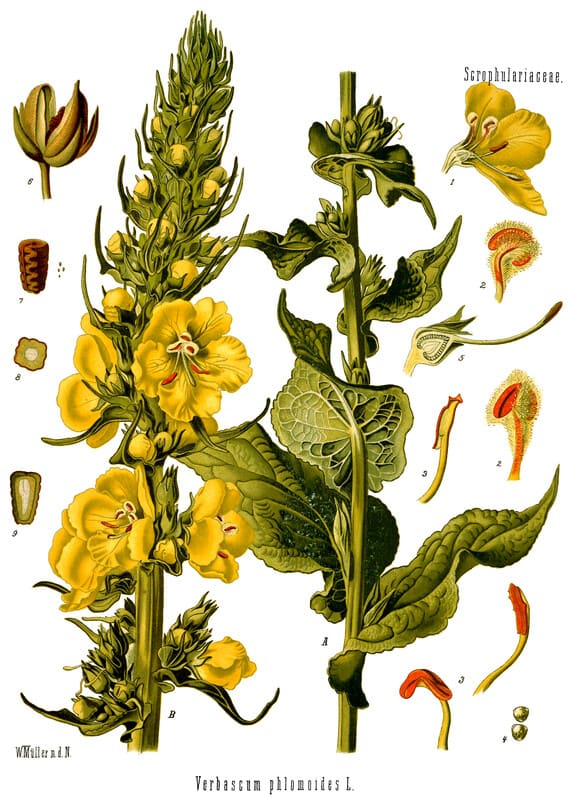Orange mullein, Great mullein, Clasping mullein, Woolly mullein, Aaron's rod
Verbascum phlomoides

🌿 Morphology
🌞 Growing conditions
🌍 Origin and family
🌾 Uses
Warning: Despite the care taken in writing this sheet, it is essential to cross-reference sources before using or consuming any plant. When in doubt, consult a qualified professional
Permaculture uses
The flowers are edible and can be used to make tea, though they have a slightly bitter taste. The leaves can be used as a cough remedy. It attracts beneficial insects to the garden. The dried stalk can be used as a torch or fire starter. Verbascum densiflorum is known for its medicinal properties.
Permapeople description
Verbascum phlomoides, the orange mullein or woolly mullein, is a species of mullein native to Europe. It is a biennial plant with large, woolly leaves and tall spikes of yellow flowers.
Botanical description
Verbascum phlomoides is a biennial herbaceous plant belonging to the Scrophulariaceae family. It features a rosette of large, basal leaves in the first year, followed by a tall flowering stalk in the second year, reaching up to 6.5 feet. The leaves are ovate-lanceolate, densely pubescent, and grey-green. The flowers are bright yellow, five-petaled, and arranged in a dense spike-like inflorescence. The plant produces numerous small seeds within a capsule. It prefers well-drained soil and full sun.
Companion planting
Generally a good companion plant as it attracts pollinators. Avoid planting near brassicas as it can attract cabbage white butterflies. Its deep taproot can help to break up compacted soil.
Propagation methods
Propagation is typically done by seed sowing in spring or fall. The seeds require light for germination. Self-seeding is common. Root cuttings are also possible, although less frequent.
History and traditions
Historically, mullein has been used for its medicinal properties, particularly for respiratory ailments. The leaves were smoked or made into tea to relieve coughs and congestion. The plant was also used for its anti-inflammatory and wound-healing properties. In some cultures, the tall flower stalks were dipped in tallow and used as torches.
Usage calendar
Flowering occurs from June to September. Seeds can be sown in spring or fall. The leaves can be harvested throughout the growing season for medicinal use. Pruning of the spent flower stalk can be done in the fall.
